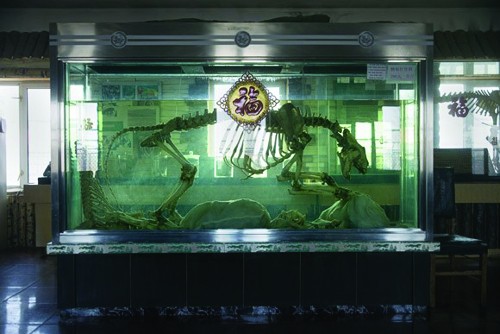Trading in the tiger’s future
TRADING IN THE TIGER’S FUTURE
Under desperate threat in the wild, a multifarious trade in tiger parts and products is thriving despite a global ban.
With your help, Born Free has MUCH work to do.
Tigers remain in a perilous state with just 4,000 across their range, the majority found in India – perilously next door to some of the highest demand countries – and an ever present, ongoing poaching threat to tigers everywhere.
A global ban in cross border commercial trade in tigers, their parts and anything made from them has long been in place while, almost 15 years ago, countries agreed to not breed tigers commercially for domestic trade either. Unfortunately, there is a yawning gap between policy and practice.
Despite the agreements, some governments have been slow to implement agreed commitments. Some have even adopted policies that directly oppose and undermine the agreements, seeking instead to ‘regulate’ and encourage a thriving industry in captive bred tigers.
‘Tiger farming’ conjures up images of battery style row after row of barren and cramped enclosures, home to speed-bred tigers, hidden away from the public eye. But, a range of problematic facilities exist, some with additional wildlife shows and shops, while others are small backyard affairs with tigers passing through on their way along the trade chain. Many of these are implicated in commercial trade, both legal and illegal, with criminal networks taking advantage of what are often wide-open loopholes and lax controls. This isn’t confined to Asia – South Africa, the United States and European countries have been flagged as urgently needing a closer look as well.
In China, skins from captive tigers are professionally taxidermied and turned into rugs for luxury home décor, skeletons are soaked in vats of wine to make tiger bone ‘health tonics’. In some countries, teeth, claws and other body parts are also in demand. Active markets for these products are found all over the world, including in western countries.
These activities feed and stimulate demand, and not just for tigers from captive sources. Wild tigers and their parts and products are considered more potent and there are thus parallel markets for both captive and wild tiger parts and products, catering to different clients and incomes.
Meanwhile, tiger populations in the wild are propped up by efforts to strengthen law enforcement, promote coexistence over conflict and oppose infrastructure developments which corrode the integrity of wildlife corridors, while demand reduction efforts in consumer countries attempt to chip away at constantly stimulated markets. So, we give with one hand and take away with the other. Critical conservation efforts are directly undermined when tigers are bred and traded – both legally and illegally – for profit and sale.
We’ve recently learnt that over a million species are at risk of extinction and that direct exploitation is a headline driver of biodiversity loss. The need for transformative changes to the way we value wildlife is critical in our re-imagining of what happens from here for wildlife and wild places, arguably most urgently for keystone species such as the tiger.
Conserve the tiger and you conserve the forest, conserve the forest and you provide critical habitat for thousands of other species, carbon stays out of the atmosphere, climate is stabilised and clean water flows. When a tiger becomes the object of trade we all lose out.


